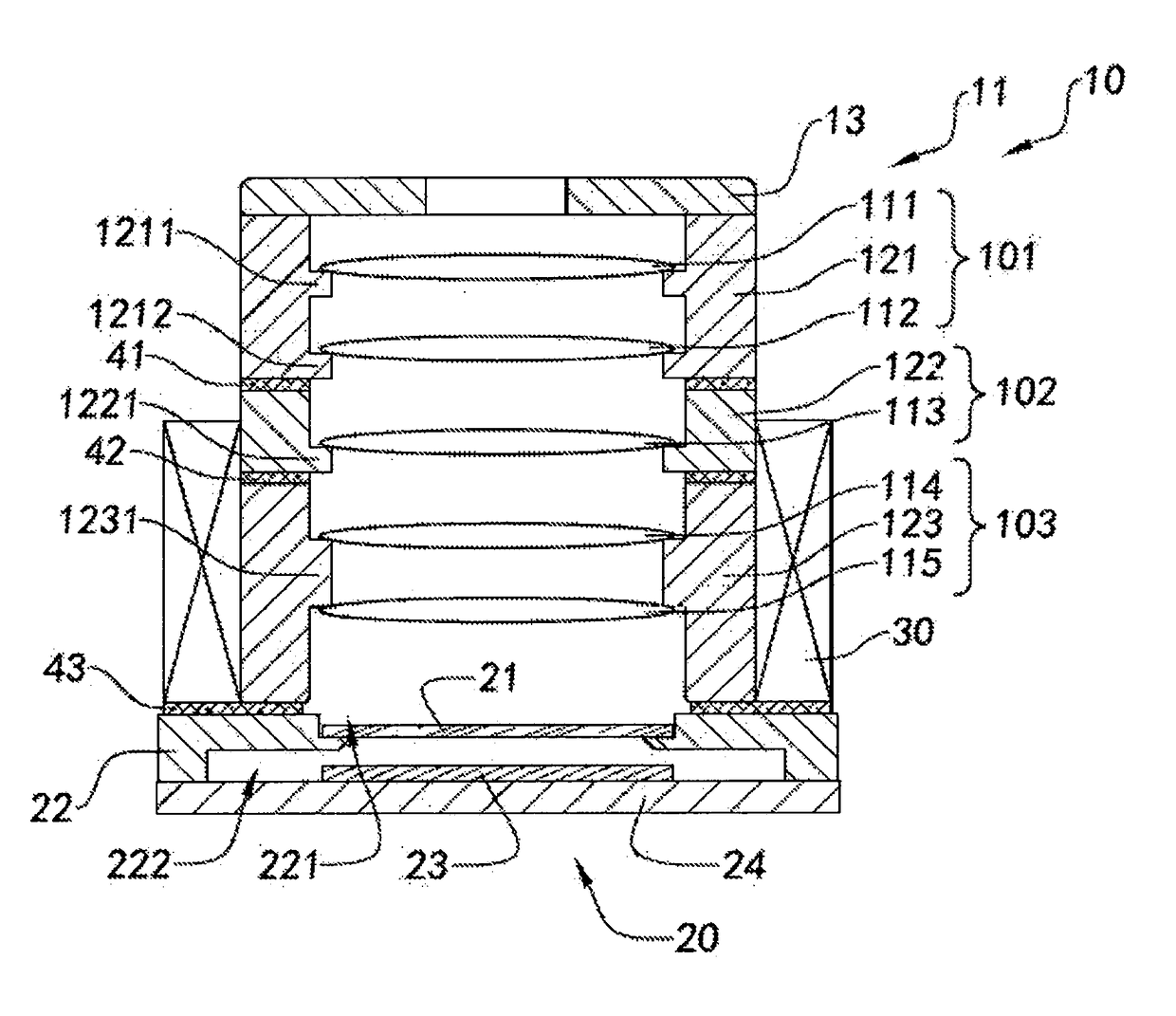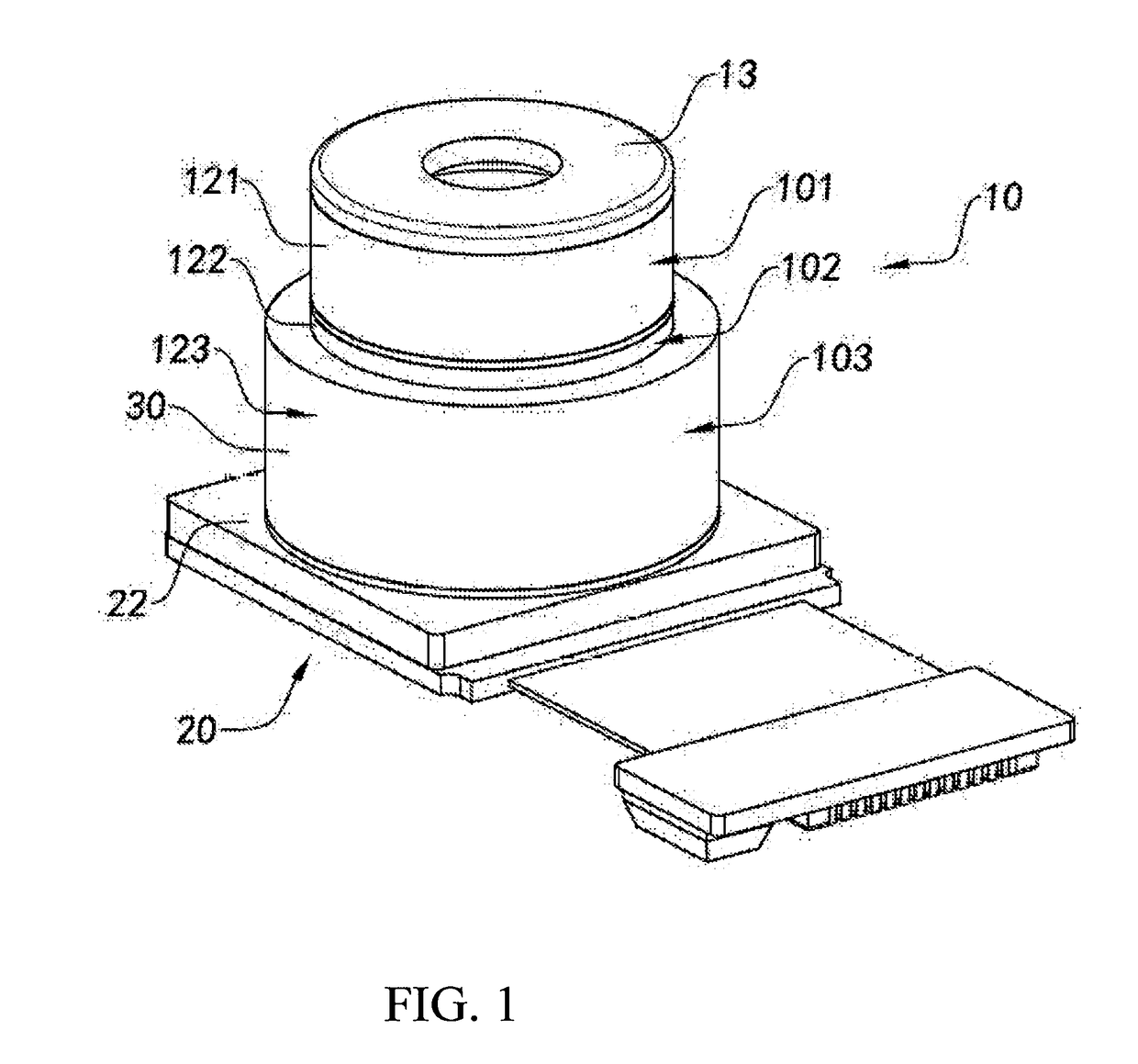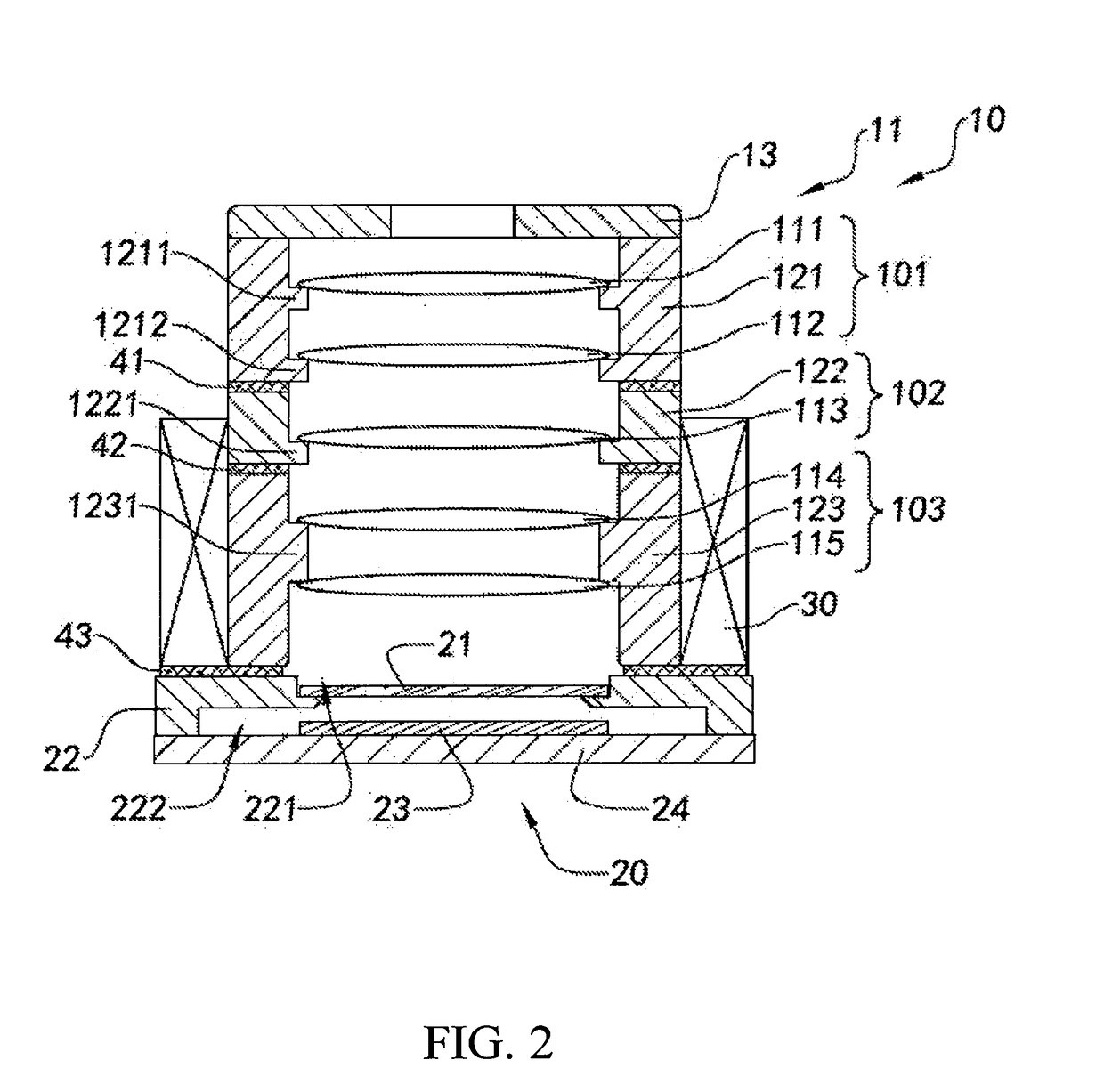Camera Lens Module and Manufacturing Method Thereof
a technology of lens module and manufacturing method, which is applied in the field of photographic cameras, can solve the problems of reducing the resolution of the camera module, reducing the optical quality the inability to correct the tolerance of the assembling of the lens assembly, so as to reduce the manufacturing cost increase the production efficiency and simplify the assembling steps of the camera lens module.
- Summary
- Abstract
- Description
- Claims
- Application Information
AI Technical Summary
Benefits of technology
Problems solved by technology
Method used
Image
Examples
second embodiment
[0124] the image sensor 20A comprises a color filter 21A, a lens base 22A (i.e. the third lens barrel 123A), a photosensitive chip 23A, and a control circuit board 24A. The color filter 21A is coupled at the third lens barrel 123A at a position above the photosensitive chip 23A. In other words, the color filter 21A is provided along a photosensitive path of the photosensitive chip 23A. The photosensitive chip 23A is operatively coupled on top of the control circuit board 24A.
[0125]In particular, the third lens barrel 123A, which is configured to have a hollow structure, has a first holding groove 221A indently formed within an inner surrounding wall of the third lens barrel 123A, a second holding groove 222A indently formed within the inner surrounding wall of the third lens barrel 123A, and a third holding groove 223A indently formed within the inner surrounding wall of the third lens barrel 123A, wherein the first, second, and third holding grooves 221A, 222A, 223A are coaxially a...
third embodiment
[0140]During the assembling process of the first optical lens module 101B, the first optical lens 111B is supported within the first lens barrel 121B via a first positioning unit 1211B which is radially and inwardly extended from an inner barrel wall of the first lens barrel 121B. In particular, the first optical lens 111B is supported at the first positioning unit 1211B via the first adhering element 41B in a semi-solidified state, such that the relative position of the first optical lens 111B is adjustable within the first lens barrel 121B. the first optical lens 111B is arranged for calibration during the calibrating process. In other words, the first optical lens 111B serves as one of the optical element to be calibrated optical elements to be calibrated. In addition, the aperture member 13B is coupled on the top edge of the first lens barrel 121B to form the first optical lens module 101B during the assembling process thereof.
[0141]In particular, the first lens barrel 121B has...
fourth embodiment
[0163] the image sensor 20C comprises a color filter 21C, a lens base (i.e. the first lens barrel 123C), a photosensitive chip 23C, and a control circuit board 24C. The color filter 21C is coupled at the first lens barrel 123C at a position above the photosensitive chip 23C. In other words, the color filter 21C is provided along a photosensitive path of the photosensitive chip 23C. The photosensitive chip 23C is operatively coupled on top of the control circuit board 24C.
[0164]The third lens barrel 123C has a first holding groove 221C indently formed within an inner surrounding wall of the third lens barrel 123C, a second holding groove 222C indently formed within the inner surrounding wall of the third lens barrel 123C, and a third holding groove 223C indently formed within the inner surrounding wall of the third lens barrel 123C. The first holding groove 221C, the second holding groove 222C, and the third holding groove 223C are formed at the upper portion, mid-portion, and the lo...
PUM
 Login to View More
Login to View More Abstract
Description
Claims
Application Information
 Login to View More
Login to View More - R&D
- Intellectual Property
- Life Sciences
- Materials
- Tech Scout
- Unparalleled Data Quality
- Higher Quality Content
- 60% Fewer Hallucinations
Browse by: Latest US Patents, China's latest patents, Technical Efficacy Thesaurus, Application Domain, Technology Topic, Popular Technical Reports.
© 2025 PatSnap. All rights reserved.Legal|Privacy policy|Modern Slavery Act Transparency Statement|Sitemap|About US| Contact US: help@patsnap.com



